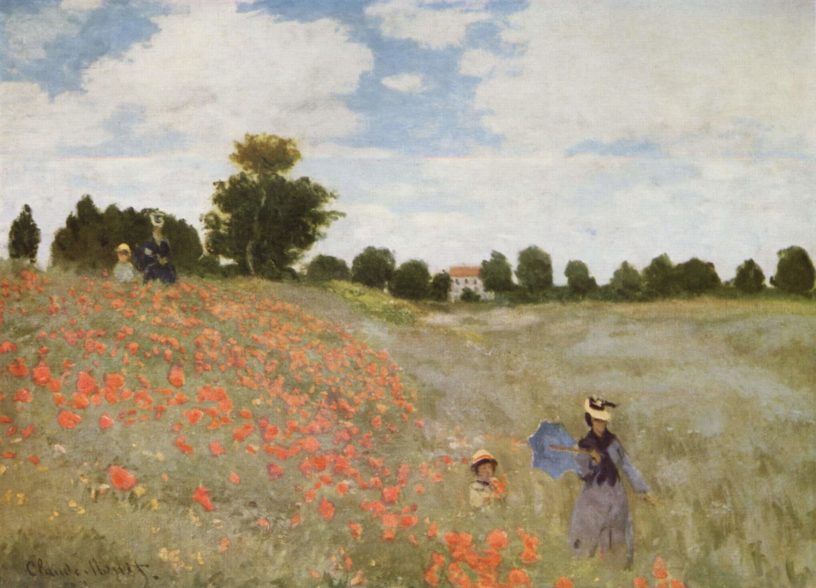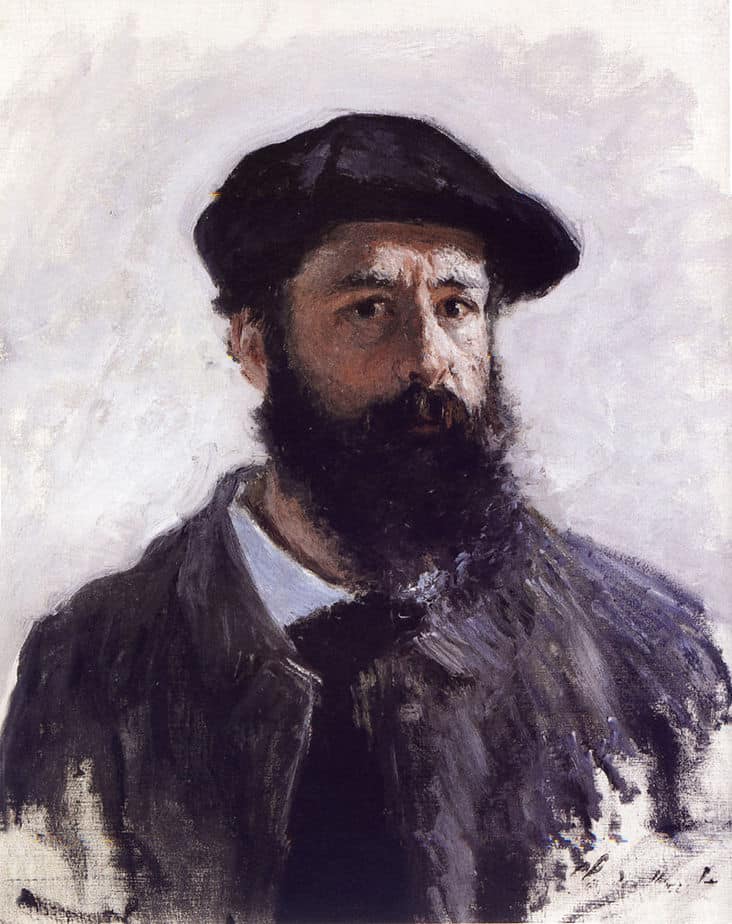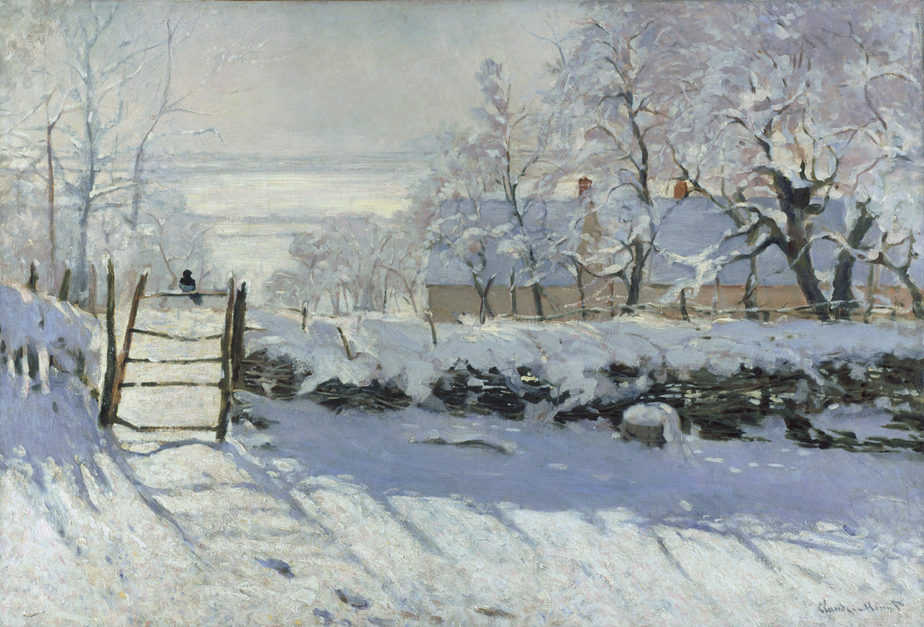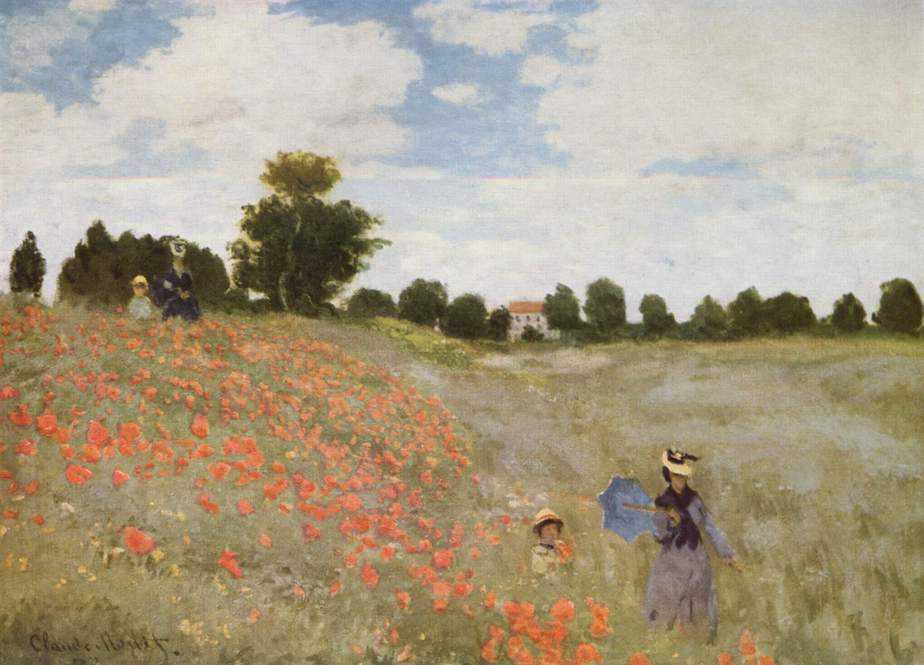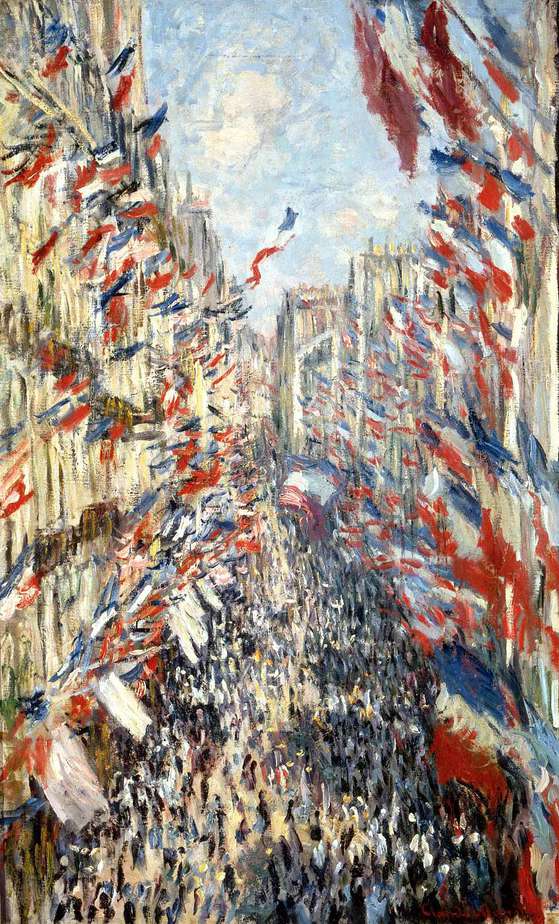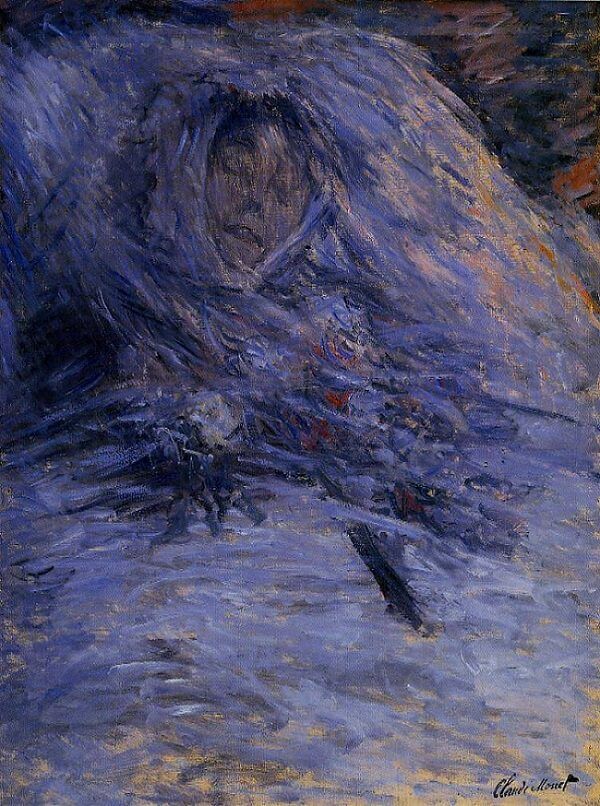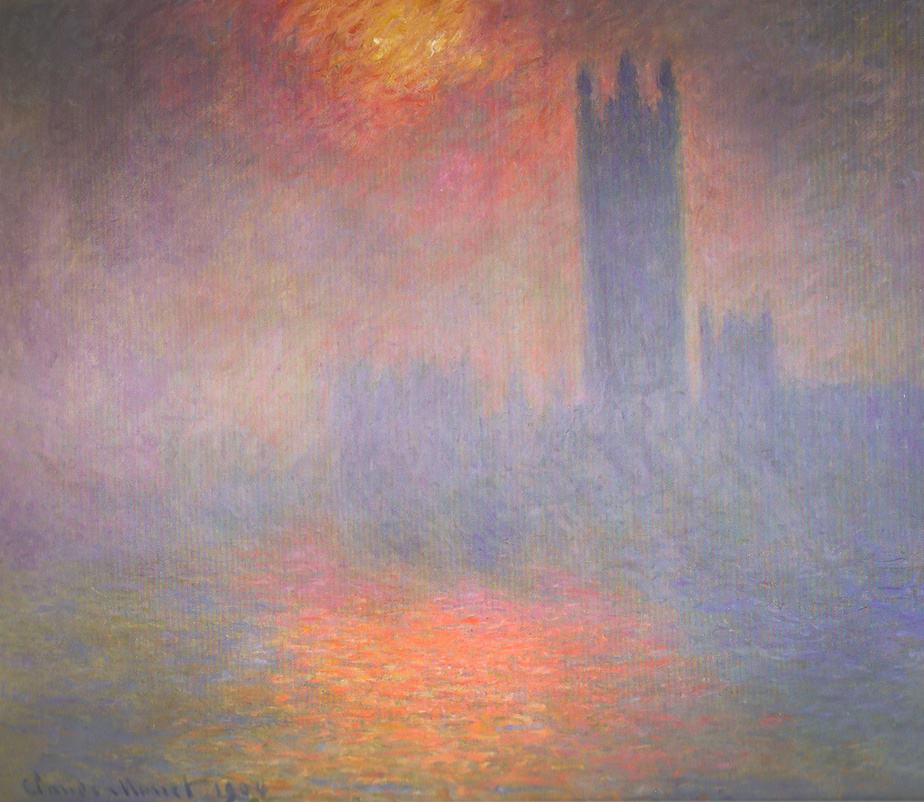Top 10 Famous Paintings by Claude Monet
Claude Monet (1840-1926) is the most famous of the Impressionists. He was a founding member of the movement and, as we will see, its name was coined after one of his paintings.
When one wants to start exploring his work, on can get eventually get lost and overwhelmed by the quantities of paintings. Monet painted around 2 000 paintings due to his long career but also his ability to paint a masterpiece in just a few hours.
A great fan of Monet myself, I propose to introduce you to 10 of his paintings among the most famous!
*
As an introductory word, it is important to stress how Claude Monet’s work was revolutionary.
He was trained in Le Louvre in the Academic style where he was expected to follow a conventional style modelled on the paintings of the Renaissance. With his friends Renoir, Sisley and Bazille, he refused this comfortable path and invented a new way of painting.
It was about painting outdoor to capture the changes of lights, the reflection of the sky on the water. They also wanted to represent the dizziness of the modernity and catch the charm of some urban scenes.
They knew it was going to be controversial. When Claude Monet started his career, the artists had to receive the permission of a conservative jury to exhibit on the official Salon de Paris. They could turn to the emerging private market but there they had to face some art critics and public whose taste was very conventional.
Monet pursued the vision he had despite the difficulties. Among his early paintings, the Magpie (1868) is one of the most famous.
1. The magpie
I feel cold just by looking at this painting. Monet plunged us into a sunny winter day in Normandy.
The painter meant to work on a technical aspect: the different shades of white. The white of the snow becomes a mirror for the sunlight.
I suppose that most of the visitors of the Orsay museum only see in this painting a charming representation of a landscape. They would be surprised to learn that this painting was provocative.
The rules of painting were very strictly defined at the time when Monet started his career. The shadow of an object should be painted in black.
But Monet’s eyes could see that in certain conditions like in this landscape, the shadow could be blue.
The painting was also too luminous for what the art critics and art teachers were used to see. For these 2 reasons, he was rejected at the official Salon de Paris.
Despite the luminosity, you may feel some sadness in this painting. When Monet painted this in 1868, he was recovering from a suicide attempt.
Extremely poor, disapproved by most of his peers, he had temporarily stopped believing in himself and his revolutionary work.
2. The Poppy flowers
This painting was made when Monet moved to Argenteuil, in the northwest suburb of Paris.
The picturesque and rural aspect of this painting can feel quite strange for a Parisian. Argenteuil is today more associated with big residential towers and insecurity than with poppy flowers fields. It makes me feel nostalgic about the lost beauty of some parts of the Parisian region.
This painting shows very well the priorities of Monet in his painting. He made a special effort to capture the light, the colors, the changing sky but did not depict the faces of the characters. It seems strange as they are his wife and his elder son.
This is not to be interpreted as laziness or carelessness. He was searching to fuse the landscape and the characters. Thus, you can find the same color on their faces than on some parts of the fields.
The period 1872-1874 when Monet was in Argenteuil was a very important moment for the Impressionists. Monet regularly invited his friends Renoir, Sisley, Pissarro and Manet to come to paint with him.
This moment of unity led to the organization of the first exhibition of a group that was not yet called the Impressionists. The idea was to avoid the censorship of the Salon de Paris and to present directly their work to the public. This exhibition was organized in Paris in 1874.
The next painting stood out of this exhibition.
3. Impression, sunrise
One early morning of April 1872, Claude Monet painted the harbor of his hometown, Le Havre in Normandy.
What is the most notable about this painting is for me not the painting itself but its history. When Monet decided to present it at the exhibition, he titled it “Impression”, since it could not really be called a view.
Among the visitors of the exhibition came an art critic called Louis Leroy, working for the satirical newspaper Le Charivari.
He made a ferocious review and reserved a special treatment to this painting, declaring “Wallpaper in its embryonic state is more finished than this seascape”. He played with the title “Impression” to laugh at Monet’s expenses.
However, Monet’s friend decided to transform Louis Leroy’s mocking jokes into the name of their movement!
After all, this word and this painting was what they wanted to paint. A spontaneous expression that keeps the vivacity of the sketch, evokes a fleeting sensation rather than to depict an idealized beauty.
4. Woman with a Parasol
This painting is the one that looks the closest of a snapshot.
Monet positioned his wife Camille as if she had suddenly turned towards him. You can feel the wind blowing on this sunny day in the countryside around of Argenteuil.
This painting is singular in Monet’s work as he gave an importance to the characters in his painting. Yet the contours of his wife and son are not neater than the rest.
If there is something I regret with Money is that he did not represent more human figures. He clearly had the talent to explore this path as his friend Renoir did.
5. The Saint-Lazare station
The Impressionists were fascinated by the rapid changes of their society. The development of the train and the building of new stations in the urban landscape was the perfect symbol of this modernity.
The station Saint-Lazare in Paris had a special meaning for Monet as it was leading to the places where he loved to paint in Normandy.
In 1877 Claude Monet developed the method of the series: to paint the same subject at different moments of the day and reflect how it differed with the changing light.
The challenge of Monet was to convey a sense of grace while reflecting the noisy and vibrant atmosphere around the trains.
Unlike many Monet’s paintings, this one was very prepared. Somewhat picky, he wanted the train to Rouen at a certain time of the day, with as much smoke as possible but not too many people on the platforms. He found an accommodating chief of station to obtain it.
On the background you can see the Haussmannian buildings, the new style created during the big renovation of Paris in the middle of the XIXth century.
Monet who had trouble to sell his painting find the support of a wealthier colleague, Caillebotte. This painter who joined forces with the Impressionists used the fortune inherited from his family to support his friends.
6. The Rue Montorgueil
Monet was walking in Paris in 1878 during the World Fair, looking for a subject to paint. On this sunny day, there was a party to celebrate peace and labor. The Parisians were waiving the tricolor flag, a symbol for the new democratic Republic that had followed the Empire.
Monet was struck by these flags. He spotted a building, asked and obtained the permission to stand in the balcony. In only a few hours, with his vivid brushstroke he had completed this painting.
I am fascinated by the way he managed, so quickly, to convey the animation of the crowd and the moving flags.
7. Camille on her deathbed
This painting is for me the most troubling and surprising of all.
In 1879, Monet’s wife Camille Doncieux died of a cancer while she was only 32 years old. Sometimes, when a young woman died young, she would be enveloped in what had been her wedding dress.
Claude Monet told that, as he was mourning his wife, he became fascinated by the changing shades of blue and grey on her body created by death. He brought an easel and started to paint her.
I remember being shocked the first time I saw the painting. I did not understand how he could think to his work in such a moment and how he could find the energy to paint it, in front of her corpse.
But, on a second thought, that was probably the way Monet found to deal with his pain. Sometimes, when the thought of what happened is unbearable, you can find shelter in thinking about something else.
Monet wrote in his diary that he became so focus on his painting that he momentarily forgot about grieving.
8. The palace of Westminster
Monet did several trips to London along his career. The first one in 1870 was especially important because of his discovery of William Turner’s painting.
He came back several times, especially between 1900 and 1904 when he painted a series of 19 paintings of Westminster Palace.
This is the one exhibited in France in the Orsay museum. It is my favorite of the series, not so much because of my chauvinism but because I have the occasion to see it in reality.
Claude Monet positioned himself in the South Bank in Saint-Thomas hospital and captured the famously instable weather of London.
For someone so passionate about the changing sky and its reflection on the water, the city seemed a paradise. What made London so special was also the foggy atmosphere. It was partly natural, partly caused by the smoke of the many industrial chimneys that were inside the city: the Londoners called it the “smog”.
As a result, Westminster Palace seems like a ghost or a mirage ready to disappear with the fog. The light of the piercing sun is diffracted and seem to put the sky on fire.
For this series, Claude Monet changed his method. He no longer completed a painting on the spot in front of the motif but finished it at home with the help of some photography. He was criticized for this.
9. The Lilies Pond, green harmony (or The Japanese Bridge)
In 1883, Monet bought a property in Giverny, a small village in his native region of Normandy.
He had said that he was only good at 2 things: gardening and painting. He then decided to transform his garden to create the perfect setting for his paintings. He painted it 324 times during 30 years.
The most notable creation was a pond for the water lilies. He even diverted a river to get the amount of water he needed.
Here is one of the most famous, nicknamed the “Japanese bridge” because of the shape of the bridge. I love the feeling of serenity impregnated in this painting.
10. The Green Lilies
This version of the waterlilies is coming from the Orangerie Museum. 2 rooms were designed to host 2 huge paintings of Monet, covering the lateral walls.
These waterlilies were a gift of Claude Monet to his country after the victory in World War I. It was settled in this museum according to his plan in 1927 shortly after his death.
Monet wrote that he wanted to give the “illusion of an endless whole, of a wave with no horizon and no shore”.
My suggestion is to get into the Orangerie museum when there is not so many people, at the opening at 9am.
Then sit, look and stop thinking. Your experience will turn into a meditation as you get immersed in the beauty of Claude Monet’s painting.
***
I hope that I gave you a desire to see Monet’s painting for real!
Most of the paintings in this list are exhibited in the Orsay museum. This museum has the biggest collection of the Impressionists painter in the world and many of the most famous one.
However, it is in the smaller Marmottan Monet museum that you will find the biggest quantity of Monet’s painting. The collection is coming from the gifts of his son Michel Monet. It is less crowded than Orsay.
The two big paintings of the waterlilies are, as we said, in the Orangerie museum. You can buy a ticket that combines Orsay and the Orangerie.
Last suggestion, you will not regret making the trip to Giverny, to visit his preserved garden. The village of Giverny is 75km on the west of Paris and it takes around one hour by train or by car.
You can also design your own Claude Monet’s tour to get a guided visit of some of these museums.
Planning a trip to Paris ? Get ready !
These are Amazon’s best-selling travel products that you may need for coming to Paris.
Bookstore
- The best travel book : Rick Steves – Paris 2023 – Learn more here
- Fodor’s Paris 2024 – Learn more here
Travel Gear
- Venture Pal Lightweight Backpack – Learn more here
- Samsonite Winfield 2 28″ Luggage – Learn more here
- Swig Savvy’s Stainless Steel Insulated Water Bottle – Learn more here
Check Amazon’s best-seller list for the most popular travel accessories. We sometimes read this list just to find out what new travel products people are buying.

